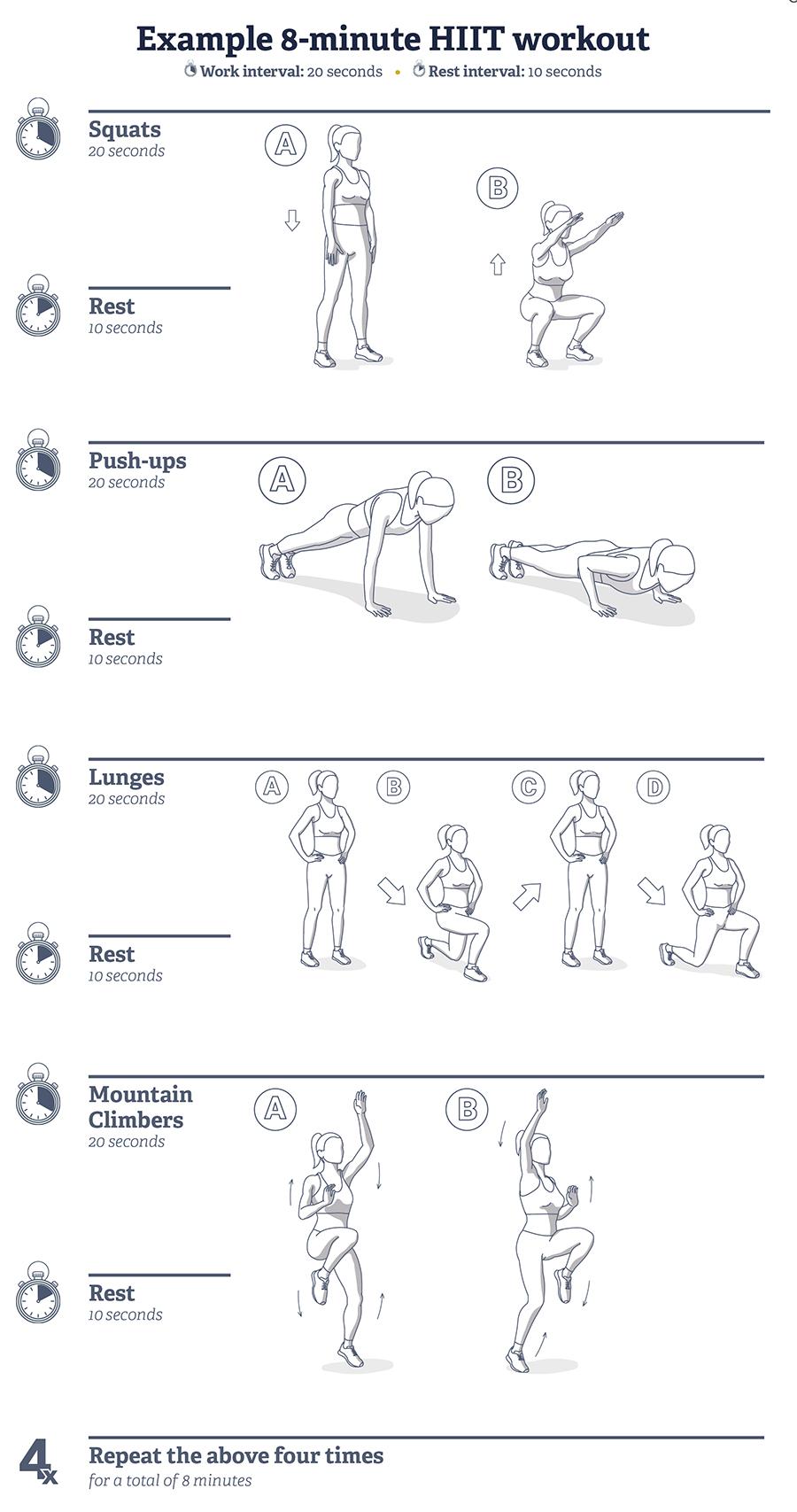In the ever-evolving world of fitness, high-intensity workouts have emerged as a popular choice for those seeking quick results and a powerful endorphin rush. From CrossFit to HIIT classes, these intense exercise regimens promise to transform bodies and boost physical endurance. Yet, as we lace up our sneakers and prepare to push our limits, an important question lingers in the background: Are these high-octane routines a boon or a bane for our mental well-being? In this article, we delve into the complex relationship between high-intensity workouts and mental health, exploring both the exhilarating highs and the potential pitfalls. As we journey through the sweat and science, we aim to shed light on whether these fitness trends truly serve our minds as well as our bodies.
Exploring the Psychological Impact of High-Intensity Exercise
While high-intensity workouts are renowned for their physical benefits, their impact on mental health is a subject of growing interest. Some studies suggest that these workouts can boost mood and mental clarity due to the release of endorphins and other neurotransmitters. Yet, there are concerns about potential negative effects, particularly when these exercises are performed excessively or without adequate recovery time.
- Stress Reduction: Many individuals find that intense exercise helps alleviate stress and anxiety.
- Improved Sleep: Regular high-intensity workouts may enhance sleep quality, leading to better mental health.
- Burnout Risk: Overtraining without sufficient rest can lead to burnout, manifesting as irritability or emotional fatigue.
- Pressure and Perfectionism: The pressure to perform at high levels can exacerbate feelings of inadequacy and perfectionism.
Ultimately, the psychological effects of high-intensity exercise vary from person to person. It’s crucial to listen to one’s body and mind, ensuring that workouts remain a positive and sustainable part of a holistic approach to health.

Balancing Endorphins and Stress: The Mental Health Equation
In the intricate dance of maintaining mental well-being, the role of high-intensity workouts is both profound and paradoxical. On one hand, these workouts are celebrated for their ability to release a cascade of endorphins, often referred to as the body’s natural mood elevators. This biochemical surge can lead to feelings of euphoria, increased energy, and a general sense of well-being. However, the flip side reveals a potential pitfall: the body’s stress response. High-intensity workouts can also trigger the release of stress hormones like cortisol, which in excessive amounts, may counteract the positive effects of endorphins.
- Endorphin Boost: Enhances mood, reduces pain, and increases relaxation.
- Stress Hormone Surge: May lead to anxiety, fatigue, and mood swings.
Finding the sweet spot between these two forces is essential. Incorporating rest days and mindfulness practices such as yoga or meditation can help in maintaining this balance. For those who thrive on high-intensity activities, it’s crucial to listen to your body’s signals and adjust accordingly. This nuanced approach ensures that while chasing the high of endorphins, one does not unwittingly invite an equally high dose of stress.

Unveiling the Myths: High-Intensity Workouts and Anxiety
High-intensity workouts have gained a reputation for being the ultimate stress busters, but not without their share of myths. While some claim these workouts can amplify anxiety, it’s crucial to dissect the realities from misconceptions. High-intensity exercises, such as HIIT or circuit training, trigger the release of endorphins, often referred to as “feel-good” hormones. However, for individuals with anxiety disorders, the surge of adrenaline and elevated heart rates might mimic anxiety symptoms, leading to discomfort.
- Myth: High-intensity workouts are always beneficial for mental health.
- Reality: While they can boost mood, they may also exacerbate anxiety symptoms in some individuals.
- Myth: All forms of exercise provide the same mental health benefits.
- Reality: The impact varies; some may find solace in yoga or walking rather than intense routines.
To find a balance, it’s essential to listen to your body and mind, opting for a workout that aligns with your mental well-being. Personalized approaches, rather than one-size-fits-all solutions, may hold the key to optimizing both physical and mental health outcomes.
Crafting a Mindful Fitness Routine for Mental Well-being
Designing a fitness routine that nurtures both body and mind requires a nuanced approach. While high-intensity workouts are celebrated for their physical benefits, their impact on mental health can be more complex. For some, these vigorous sessions can lead to feelings of stress and burnout, especially when not balanced with adequate recovery. Therefore, integrating mindfulness into your exercise routine can create a harmonious balance between physical exertion and mental tranquility.
- Incorporate Rest Days: Allow your body and mind to recuperate by scheduling regular rest days to prevent overexertion.
- Focus on Breathing: During workouts, pay attention to your breath, fostering a connection between your mind and body.
- Set Realistic Goals: Establish achievable objectives that encourage progress without overwhelming stress.
- Mix Intensity Levels: Blend high-intensity workouts with low-impact exercises like yoga or tai chi to maintain mental equilibrium.
Crafting a mindful fitness routine can transform your workouts into a sanctuary for mental well-being. By embracing a balanced approach, you can enjoy the benefits of exercise while safeguarding your mental health.
